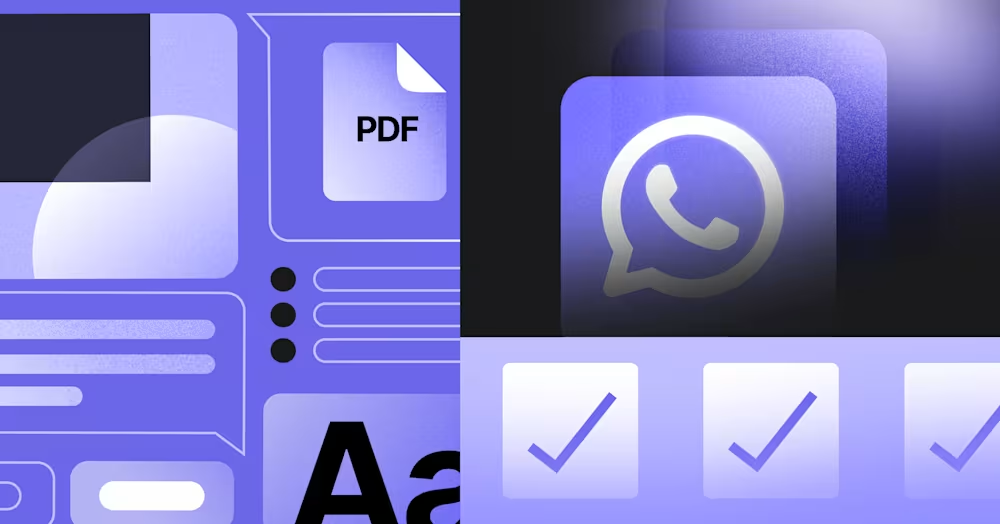
WhatsApp 訊息範本:包含 13 個範例的操作指南
除非使用 WhatsApp 訊息模板,否則企業無法在 24 小時後發送 WhatsApp 訊息。 了解如何格式化和傳送範本訊息以及範例。
![什麼是 CSAT? 顧客滿意度流程指南 [2023 年 7 月]](https://assets2-proxy.respond.io/ph8r57dk1q9w/1wdo2s27Jbb0E85thPjWZ5/b35f03ac7adb913406dfe4f8eeb759e9/CSATCoverImage_386b5c472bec38f324e15c39bd6770e0.png?q=70&fm=avif)
什麼是CSAT? 我該如何計算我的客戶滿意度分數? 中型到大型企業應該熟悉這些術語。 以下文章旨在教你有關客戶滿意度流程的一切——從基本的CSAT概念到創建CSAT調查和使用respond.io工作流程保存回應。
客戶滿意度(CSAT)是一種衡量客戶對整體公司或特定環節或體驗(如定價、服務、支持等)感到滿意的程度的方法。
客戶滿意度與公司的成功息息相關,因為滿意的客戶往往會成為忠實的品牌倡導者。 它們有助於建立強大的品牌聲譽並保持低客戶獲取成本。
保留現有客戶的成本比獲取新客戶低,因為現有客戶已經信任該公司。 然而,新的或潛在的客戶需要企業投資以引導他們通過客戶生命周期的早期和高成本階段。
衡量客戶滿意度的最常見方法是使用調查。 傳統上,公司通過電子郵件調查客戶的滿意度水平。 但如今,我們正看到公司越來越多地將業務流程轉移到消息應用中。
電子郵箱 | 即時消息 |
|---|---|
較低的回應率 | 較高的回應率 |
不同的消息通道 | 相同的消息通道 |
相同的過濾器 | 無垃圾郵件過濾器 |
電子郵件可能無法被注意而進入垃圾郵件文件夾。 這對即時消息來說並不是這樣,它將直接到達收件人並提醒他們,除非發件人的號碼被屏蔽。
但電子郵件調查的主要缺點是它們發生在不同的消息通道上。 在聊天應用程序上結束對話的人不太願意花額外的時間來完成電子郵件調查。
也可能是,當客戶打開他們的收件箱時,他們已經對這個問題失去了興趣。
相比之下,回覆應用內調查是直接的。 客戶可以在與代理人的對話結束後,在相同的消息通道中這樣做。 由於對話仍然新鮮,他們更願意當場完成簡單的調查。
由於上述原因,通過即時消息發送的調查的回應率通常高於電子郵件調查。 較高的回應率使企業能夠更準確地了解客戶滿意度。
因此,通過即時消息測量客戶滿意度分數是一個更好的選擇。 但,企業用來測量客戶滿意度的指標是什麼呢?
有三種流行的客戶滿意度指標。 它們用於不同的目的,因為每一個都提供了客戶如何評價某一公司的不同視角。
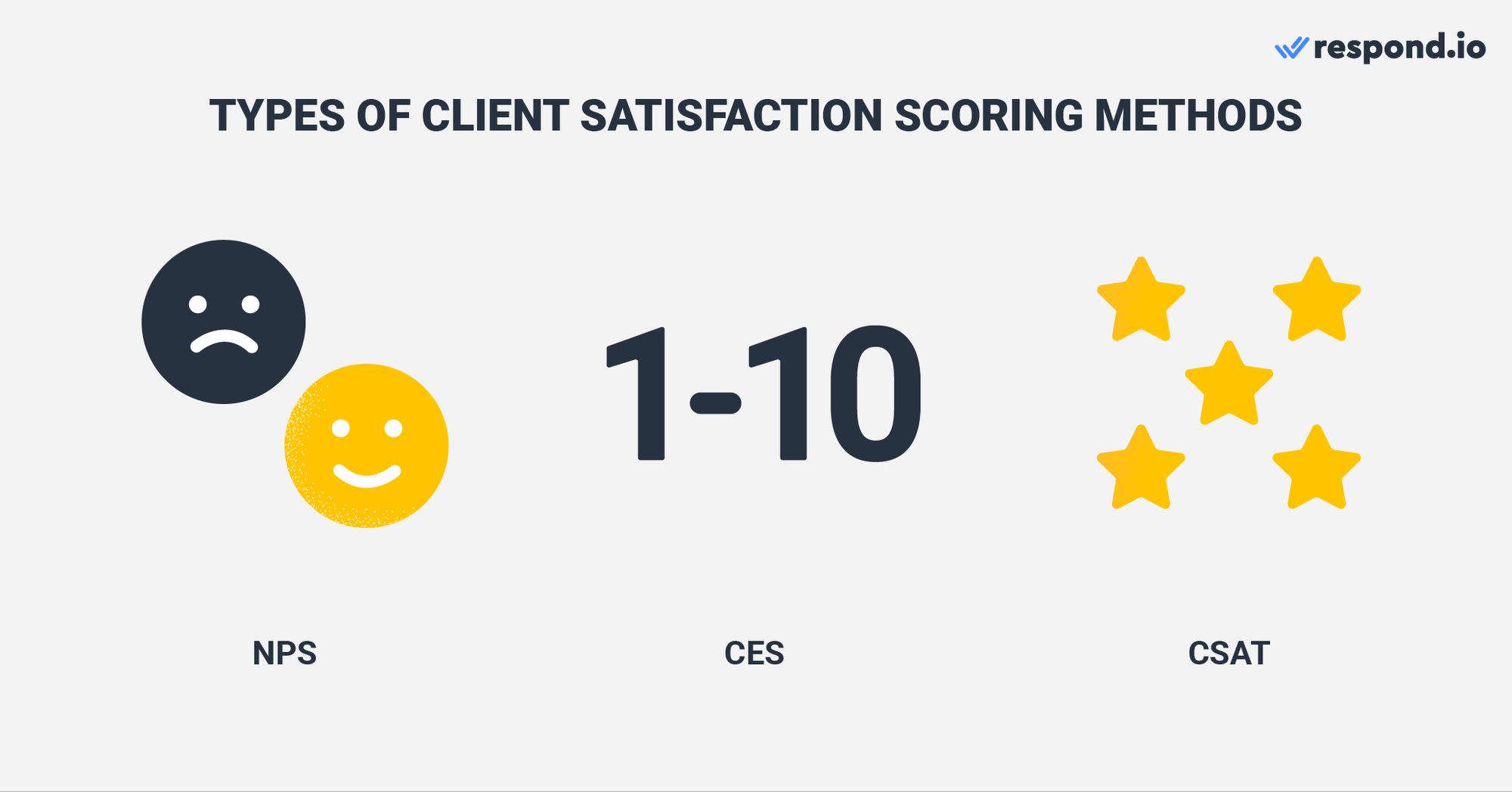
NPS(淨推薦值)是一種衡量客戶忠誠度的指標。 基本的NPS調查會提出類似於您有多可能向朋友或同事推薦我們的企業?的問題。
然後,調查者會被要求從1到10中選擇一個分數。 根據分數,客戶會被分為推廣者(9到10)、被動者(7到8)和貶低者(0到6)。
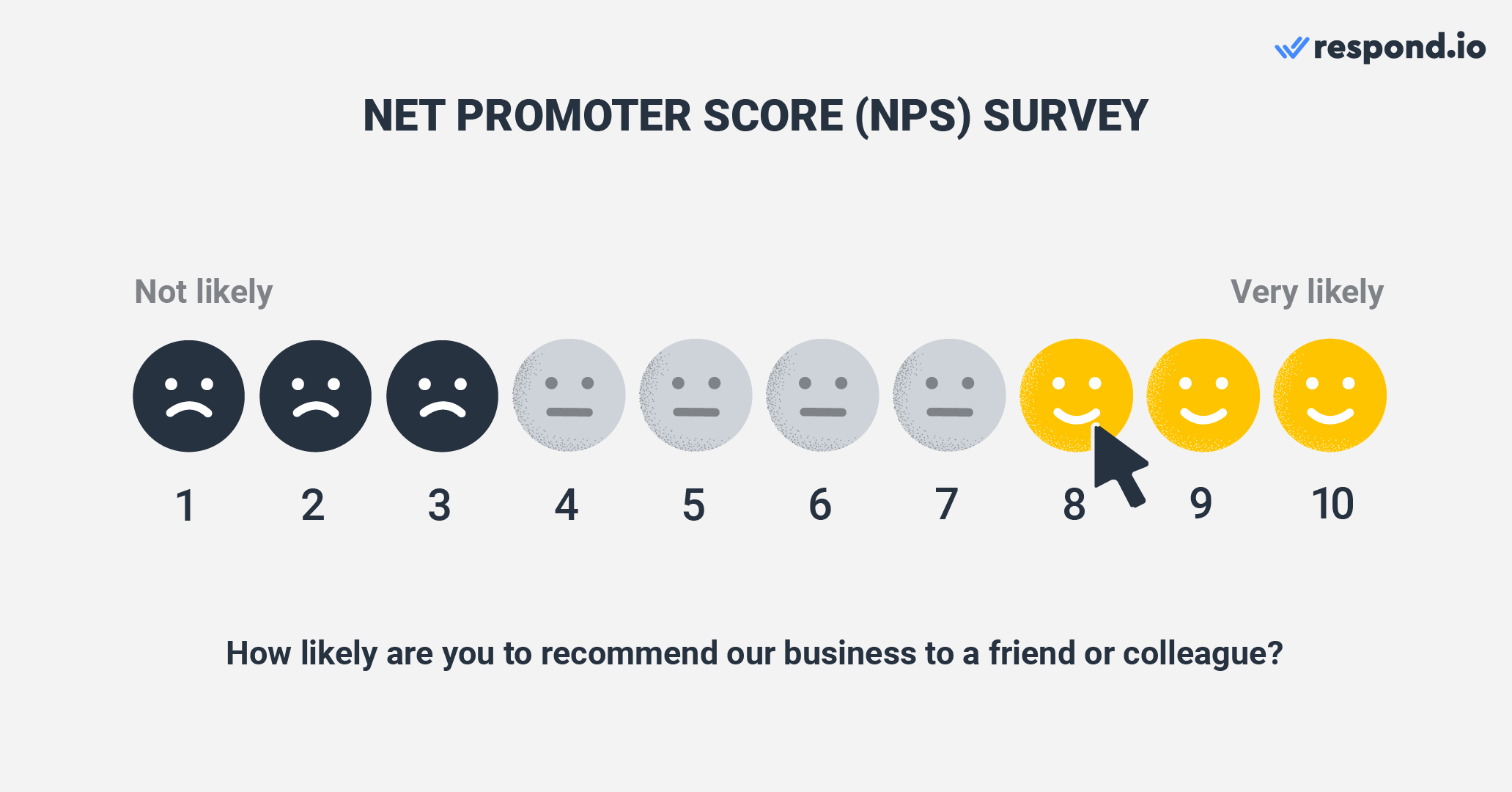
這一指標專注於在長期內建立良好的客戶滿意度流程。 通過針對推廣者和被動者,企業可以與客戶建立長久的關係。
CES(客戶努力指數)指示客戶為完成某項動作所需付出的努力。 例如,購買或取消。
CES問題可能看起來像這樣:今天解決您的問題花了多少努力?客戶通常會從一個數字刻度中選擇一個數字,儘管一些調查使用顏色按鈕或表情符號來表示客戶滿意度。
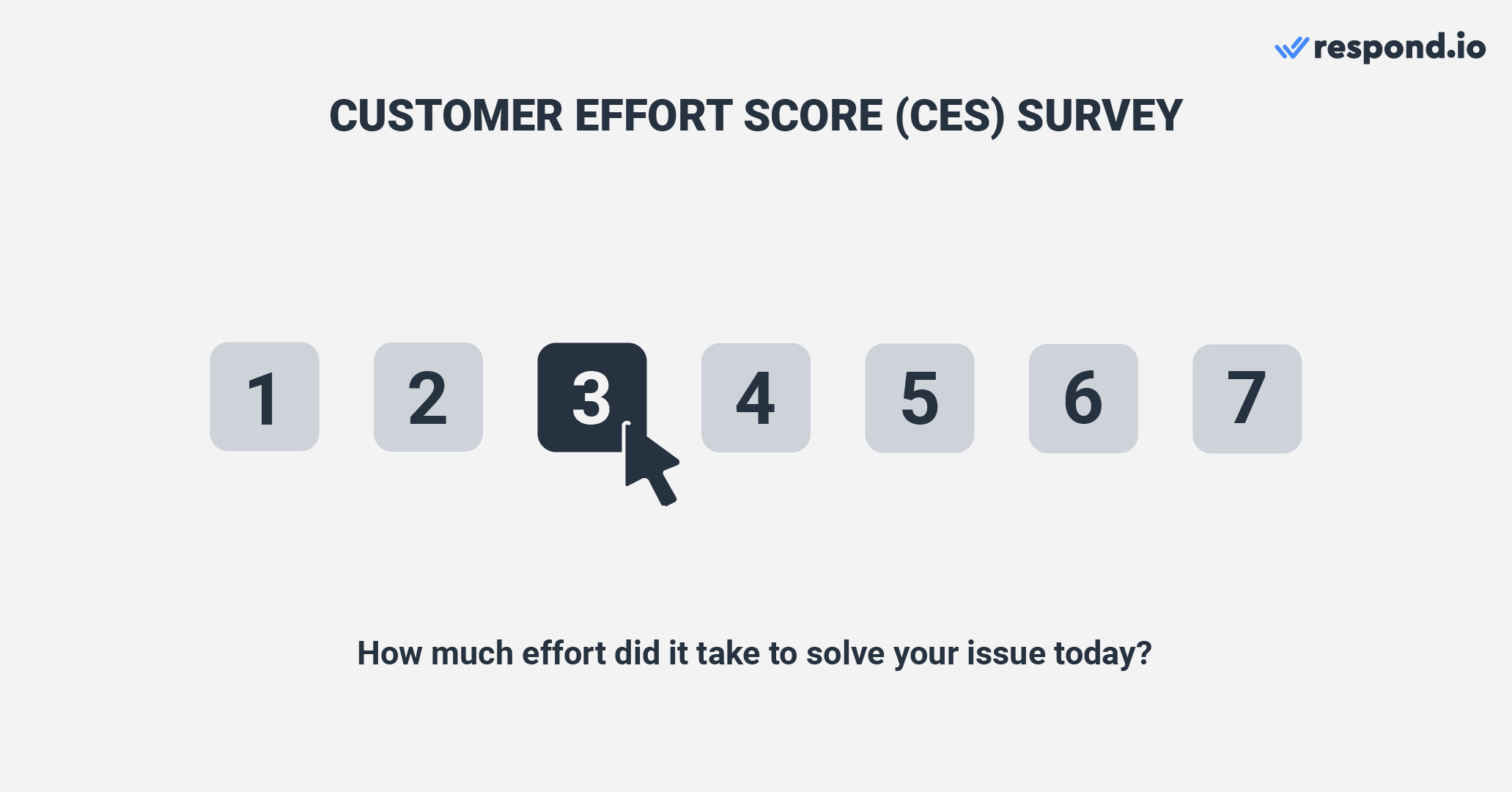
這一指標是重複客戶和推薦客戶可能性的良好指標。 同時,它可以揭示某些顧客服務不佳的領域。 類似於NPS,CES是一項長期價值指標。
最後是客戶滿意度指數(CSAT)。 這是最流行的客戶滿意度指標,因此我們有一個專門的部分來介紹它。 繼續閱讀以了解更多。
在上一部分中,我們看到NPS和CES調查是衡量長期價值的有用指標。 現在讓我們看看CSAT分數是什麼,以及它與其他兩個指標有何不同。
與CES和NPS不同,CSAT分數衡量客戶在與公司特定互動後所經歷的滿意度程度。 因此,公司使用CSAT調查來分析客戶滿意度過程中的不同步驟的體驗。
例如,CSAT是支持團隊用來確定他們解決問題的有效性的流行指標。
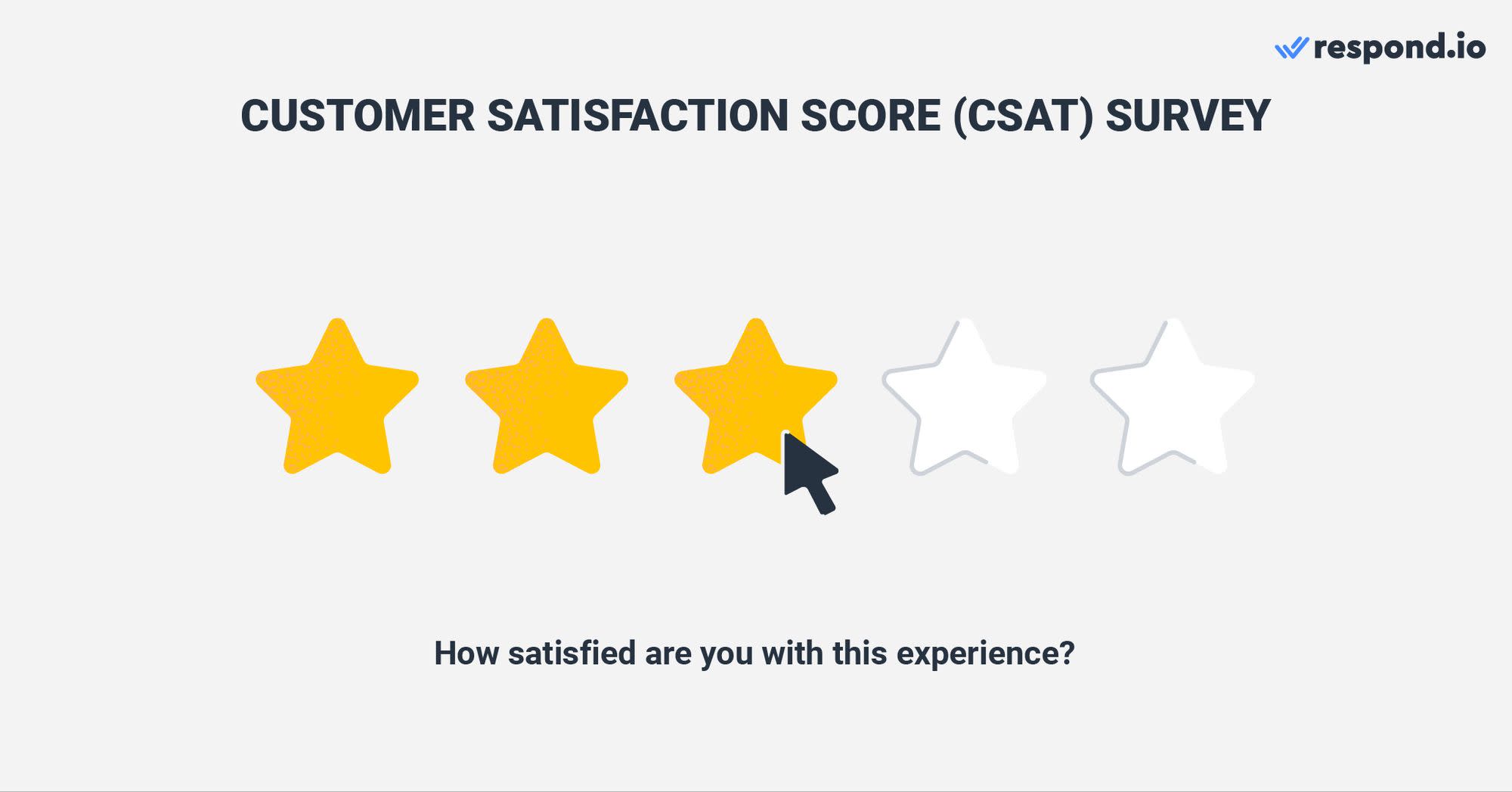
CSAT調查會提出類似您對這次經驗滿意嗎?的問題。在所有CSAT評分系統中,最受歡迎的系統使用星星、表情符號或數字刻度。 在某些情況下,調查可能有兩個或兩個以上的問題。
由於通常使用數值,CSAT調查數據易於處理。 當特定互動獲得較低的客戶滿意度得分時,企業可以針對問題並尋找改善客戶體驗的方法。
CSAT調查易於回答,通常只需一個點擊。 這鼓勵人們參與調查。 因此,CSAT調查的回應率很高。
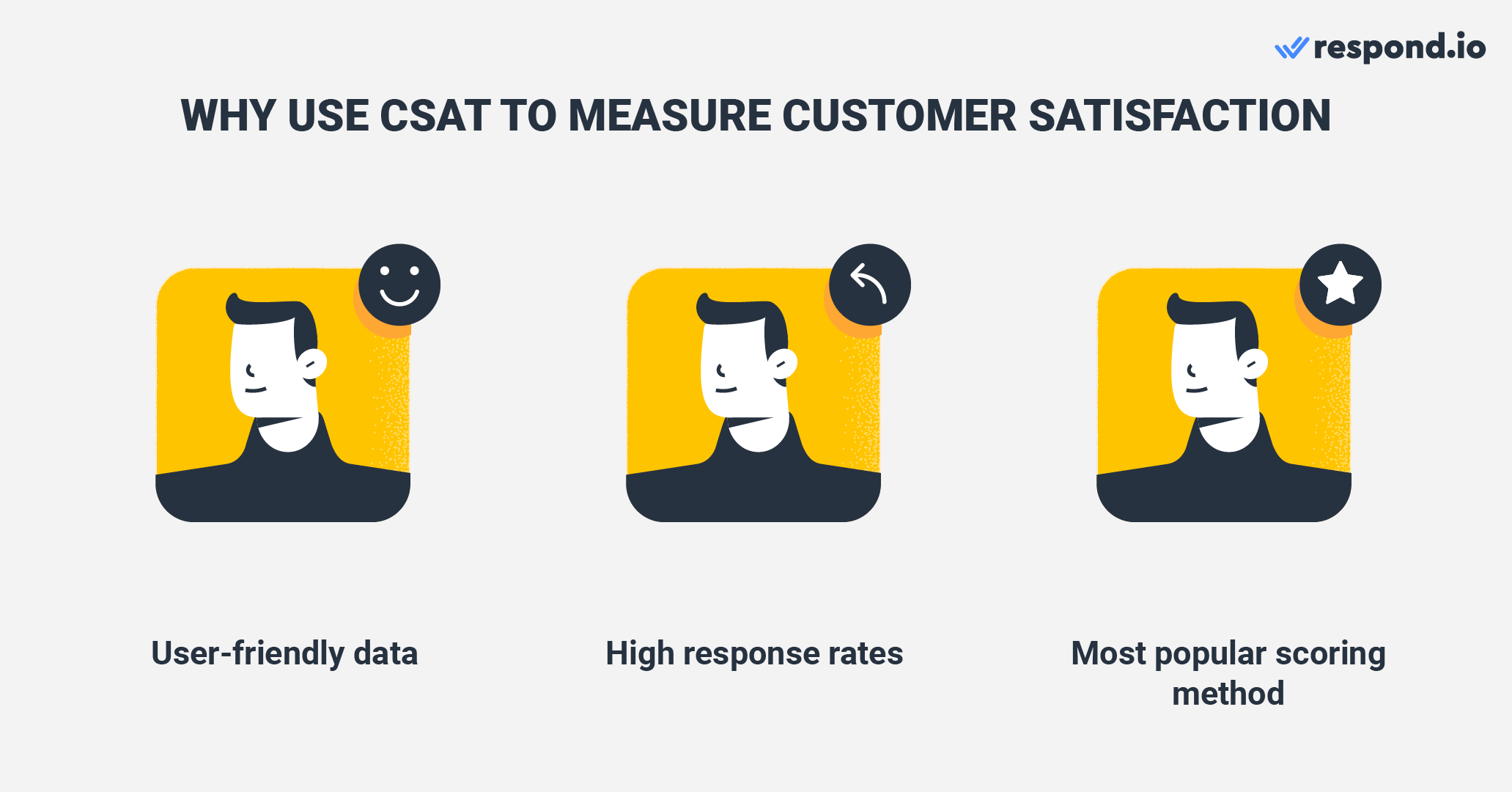
由於這是最流行的評分方式,企業通常會在其網站上分享客戶滿意度分數,以向訪問者展示他們擁有優秀的客戶滿意度流程。
這些得分可以作為其他企業使用CSAT調查以改善自己得分的基準。 在下一部分中,我們將解釋如何計算公司的CSAT分數。
要計算客戶滿意度分數,您的公司首先需要確定良好分數的基準。 然後,將符合或超過該基準的答案數量除以提交的總答案數。
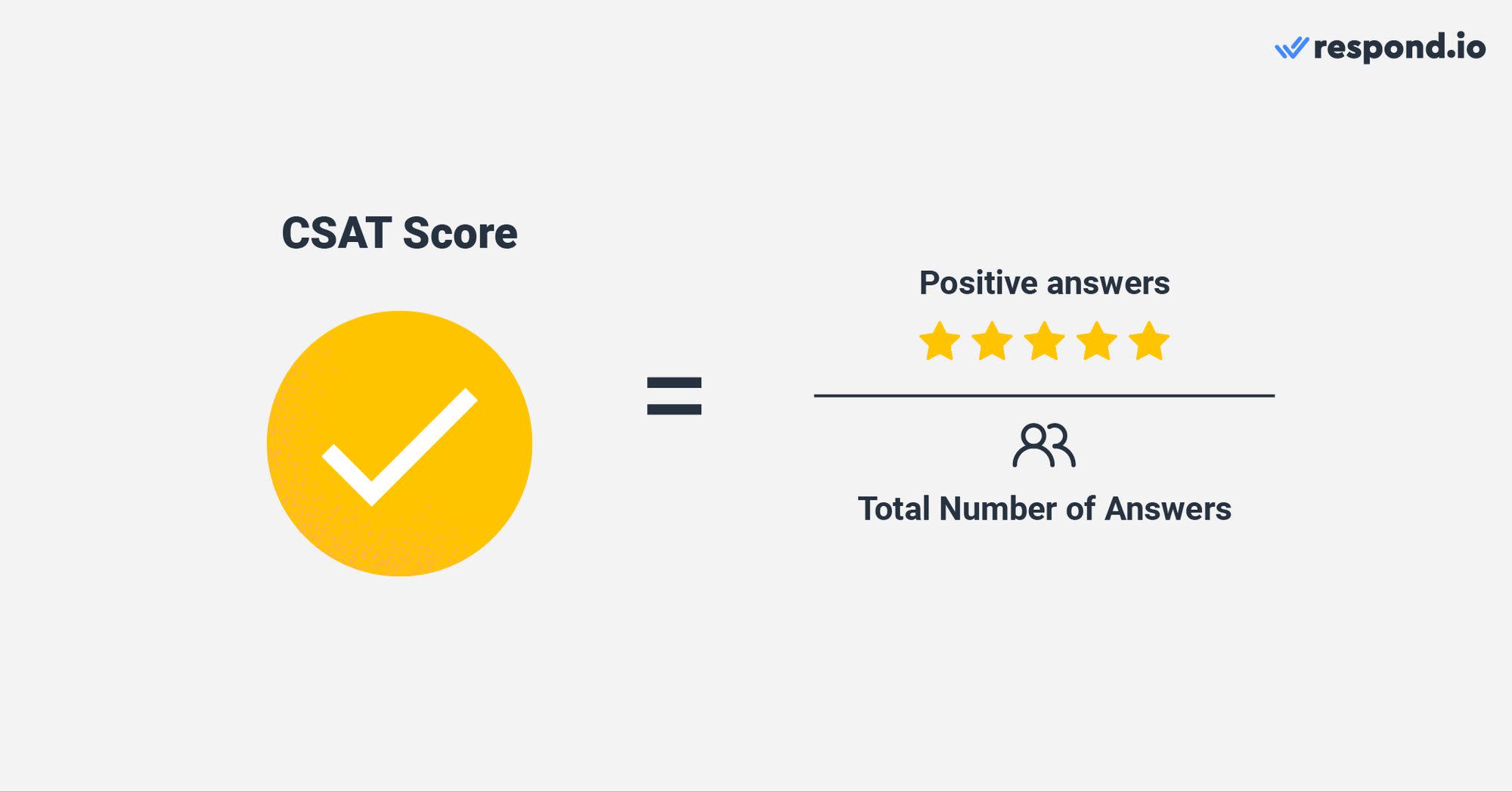
什麼是良好的CSAT分數? 一般來說,擁有75%或更高的CSAT分數被認為是良好的。 但是這取決於行業和公司的自身目標。
我們已經涵蓋了CSAT調查和分數。 在下一部分中,我們將向您展示如何使用respond.io中的工作流程創建自己的CSAT調查。 如果你還不熟悉工作流,建議你從這裡開始。
使用respond.io,使用者可以創建在與聯絡人結束對話時觸發的CSAT調查工作流程。 此外,選擇對話關閉觸發器允許使用者實施觸發變數。
簡而言之,觸發變數屬於工作流程變數類別。 它們僅在工作流程會話期間存在。 找到可用於對話關閉觸發器的完整觸發變數列表這裡。
這種類型的變數允許無窮的可能性。 但在CSAT調查的上下文中,我們建議在使用HTTP請求步驟將CSAT數據發送到CRM時使用觸發變數。
現在,使用對話關閉觸發器有一點缺點。 在短時間內有多次對話的聯絡人將會重複收到相同的調查。 這可能會對客戶滿意度流程產生負面影響。
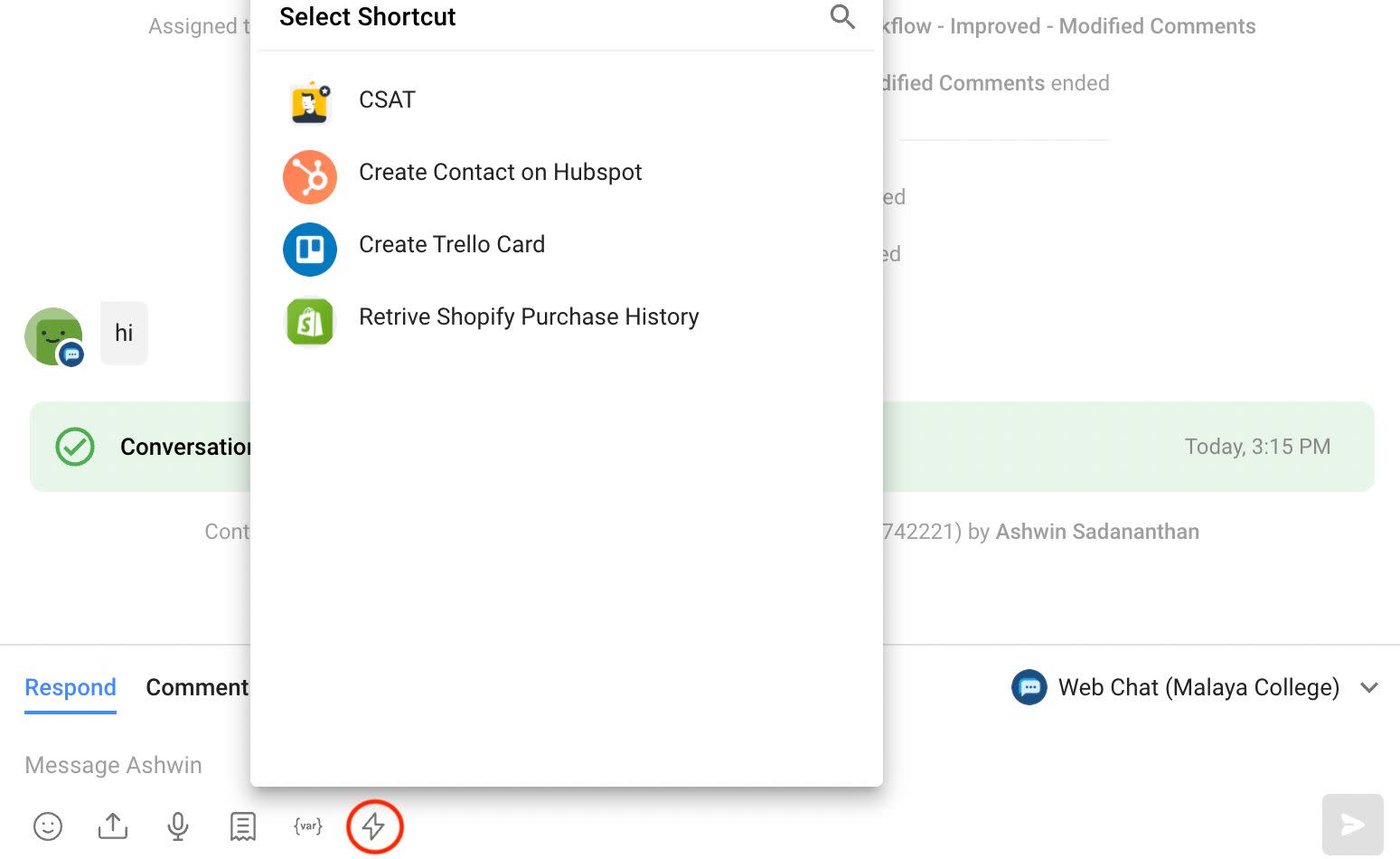
對於CSAT目的,我們通常建議使用手動觸發器,比如快捷鍵。 這允許使用者通過單擊訊息模組中的快捷按鈕手動發送CSAT調查。 一旦你選擇了你偏好的觸發器,不論是對話關閉還是快捷方式,現在是時候在工作流中創建調查了。
要開始調查,您需要在觸發器之後立即設置問問題步驟。 如前所述,最常見的CSAT調查問題是:您對此經驗有多滿意?在問題文本字段中輸入您的問題。
問問題步驟提供了幾種問題類型可供選擇。 但為此,您會想選擇評分類型。 評分問題類型非常適合此用例,並允許聯絡人在1到5顆星之間選擇評分。
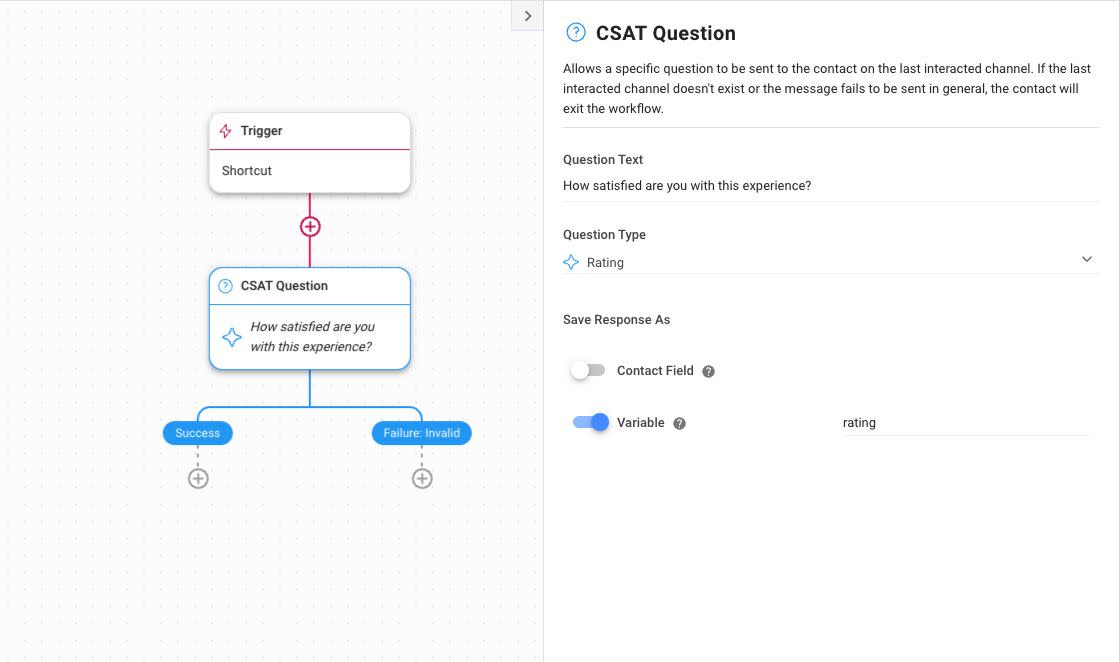
在此步驟中收集的答案將用於後續步驟。 這意味著它們需要保存為變數。 啟用保存回應為變數,並給變數命名。 例如rating。
調查部分已完成。 但如果不保存答案,您將無法計算客戶滿意度分數。 您可以將答案保存到Google Sheets或資料倉庫。 我們首先來看看Google Sheets方法。
要將調查答案保存到Google Sheets,選擇添加Google Sheets行步驟。 然後,點擊已連接的Google Sheet按鈕並選擇要保存答案的Google Sheet。
在列映射字段中,使用文本、變數或Google Sheets數據命名列。 還記得之前我們命名的變數$rating嗎? 別忘了將其包含在其中一列中。 否則,您的CSAT評分將不會在Google Sheet中顯示。
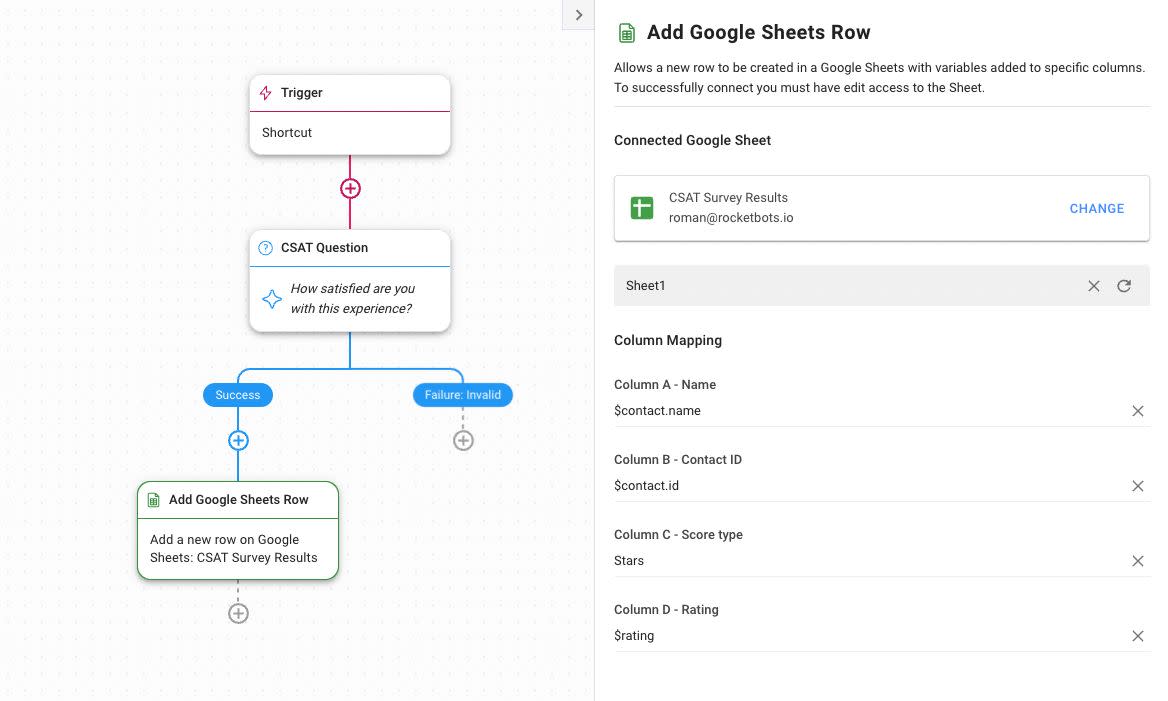
當工作流程被觸發時,在列映射字段中定義的值將被添加到選定的Google Sheet,並顯示在表底部的新行中。
一些公司使用如Zendesk、Salesforce或Hubspot等CRM,並且偏好將其答案保存到那裡。 我們也能滿足這些需求 讓我們看看這在最後一部分是如何運作的。
為了將答案保存至 CRM 或數據倉庫,我們需要在其 API 和 respond.io 之間創建一個 webhook。 這可以通過在詢問問題步驟後添加一個 HTTP 請求步驟 來完成。
要正確填寫方法、URL、正文和標頭,請參考您正在使用的第三方 CRM 或數據倉庫的 API 文檔,以存儲 CSAT 數據。
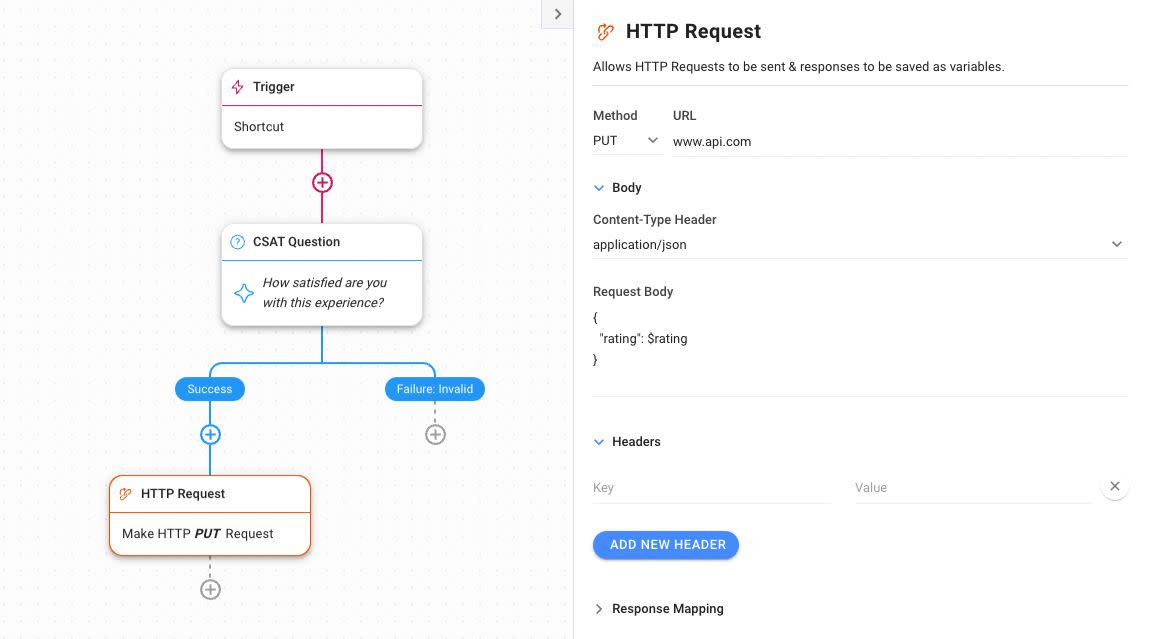
最後,請記得在請求正文字段中包括在詢問問題步驟中保存的變數(我們之前命名為 rating)。 這個變數保存您想要轉移到所選軟件的調查答案。
正如您所見,respond.io 使客戶滿意度過程變得簡單。 但可能性並不止於此。 您想要用領先的消息平台進行營銷、銷售和支持嗎? 立即註冊 respond.io 帳戶!
您覺得這篇文章有用嗎? 如果是的話,這裡有一些可能會引起您興趣的其他快速閱讀:
Román Filgueira 是維戈大學畢業生,擁有外語學士學位,於 2021 年加入 respond.io 團隊,擔任內容撰稿人。 Román 提供有關使用訊息應用程式推動業務成長的最佳實踐的專家見解。